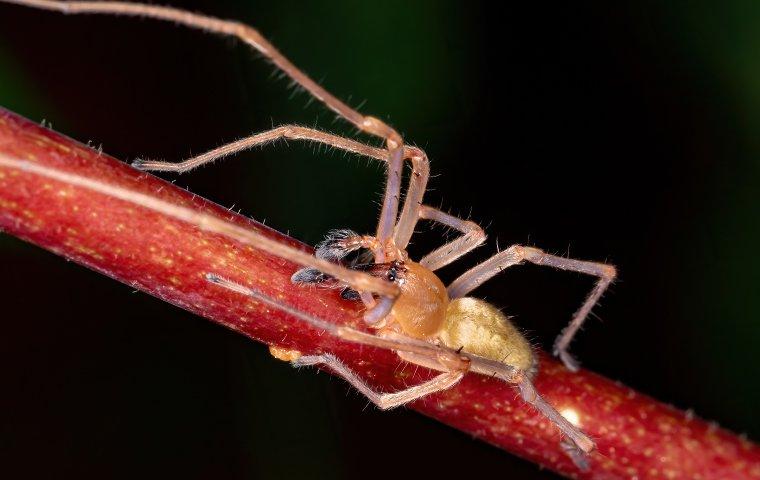The Key To Effective Spider Control For South Bend Property Owners
It’s no secret, spiders are not a welcome sight in any South Bend home. However, if you spot spiders in your South Bend home, it could be indicative of a larger problem. That’s right, unlike other pests that enter homes in search of shelter or water, spiders enter homes because they are seeking other pests upon which to feed. Therefore, if you have a spider problem in your home it is most likely because you have another pest problem in your home as well. As such, you need to practice both spider prevention techniques, as well as general pest prevention techniques. Otherwise, you risk leaving your home exposed to all sorts of infestations.

Identifying Common Area Spiders
In the world, there are over 40,000 species of spiders, all of which have eight legs, bodies consisting of two segments, and fangs capable of transmitting venom. Although all spiders do possess venom, many are harmless to humans. However, here in the United States, two spider species do pose threats to humans. These are the black widow and the brown recluse, each of which has distinct markings. The black widow female, for instance, is black-bodied with a red hourglass figure on its abdomen. The brown recluse, on the other hand, has a brown body with a darker brown violin-like figure on its back. Given their potent venom, if you suffer a bite from either of these spiders, you should seek medical assistance immediately.
Luckily for us in South Bend, these spiders are not common in our area. Instead, the spiders you will most likely encounter here include cellar spiders, cobweb spiders, and yellow sac spiders.
Cellar Spiders are often confused with daddy longlegs because they have small bodies, about ¼ of an inch long, with long slender legs. They are usually gray or brown, and they build irregularly-shaped webs often in the corners of basements and attics.
Cobweb Spiders are medium-sized spiders that have a length of about ½ an inch, their abdomens being larger than their heads. They are usually black or brown, and they like to build their webs near the floor of crawl spaces, basements, or garages. These spiders are not afraid to abandon unproductive webs, leaving behind cobwebs which is how they get their name.
Yellow Sac Spiders are about ¼ of an inch in size and, as their name suggests, yellowish. The sac part of their name refers to sacs that they build in which they hide during the day. They will then venture out at night to hunt for prey. They will usually abandon a sac after a single use, often around window sills and in the corners of rooms.
Spider Prevention Techniques
As previously stated, spiders enter into homes because there is prey—in the form of other pests—for them to feed on. Therefore, spider prevention means pest prevention. To keep pests, and therefore spiders, out of your home, you should:
-
Wipe up any spills from countertops or floors immediately.
-
Store all food properly in air-tight containers or the fridge.
-
Take out the trash regularly.
-
Store trash in bins with tight-fitting lids.
-
Fix any leaky pipes and fixtures.
-
Use dehumidifiers to keep moisture levels in your home low.
-
Install door sweeps in exterior doors.
-
Install screens in windows and exterior doors.
-
Fill in any cracks in the foundation of your home.
Effective Spider Control
If you have any further questions about spider prevention, or if you are dealing with a spider infestation, call the trained pest experts here at Termishield right away. Not only will we help to eliminate any pest infestation with which you are currently dealing, but we will also work with you to take the proper precautions to prevent future infestations. Don’t let spiders take over your home. Call us now.
Tags: pest prevention | home pest control | spiders |
Request Your Free Inspection
Complete the form below to schedule your no obligation inspection.

